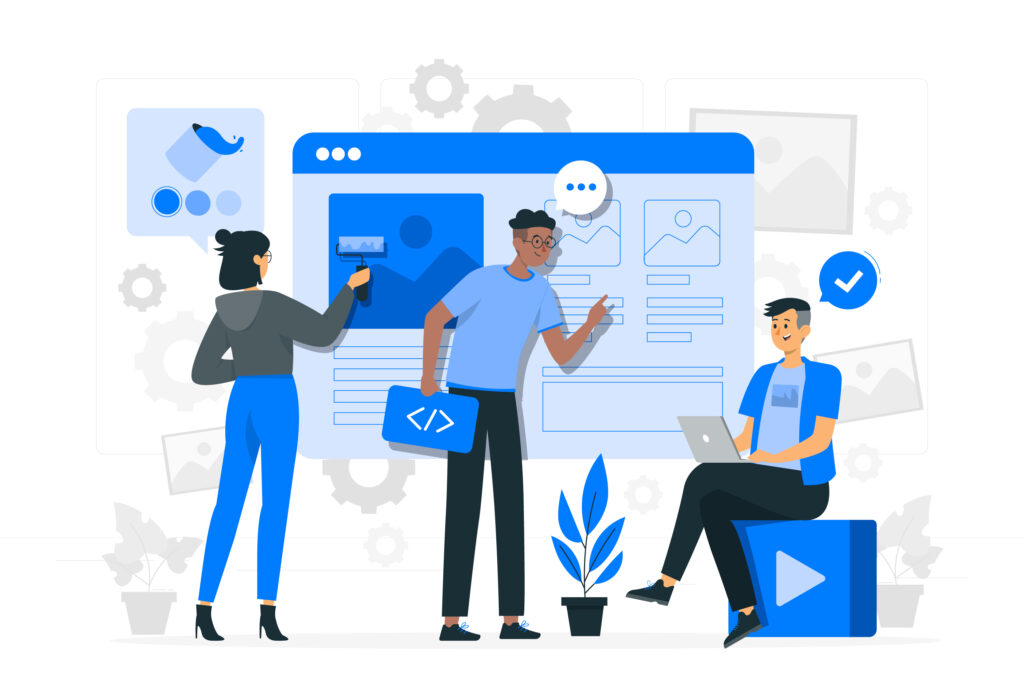You ever land on a website and just get it? No thinking, no guessing—everything’s just… there. You know exactly where to click, what to do. And when you leave, you don’t even realize why it felt so easy. That’s not luck. Someone built that site for you.
Sounds fancy— “user-focused optimization” and all that—but really, it’s just common sense. Think of it like hosting a party. Would you hide the snacks in some weird corner? Play music no one likes? Forget to tell people where the bathroom is? Nah. You’d make sure your guests feel at home, right?
Websites should do the same. No weird layouts. No guessing games. Just smooth, effortless, ahh-this-is-nice kind of design.
Hey all, my time as technical sales head taught me something crucial. When a company’s website just gets its target audience – you know, it’s easy to use and has what they need – it’s incredible how many good leads you get. It’s like having a salesperson working tirelessly, day in and day out.
So, why does this even matter?
- People stay longer – If a site is easy to use, people don’t bounce right away. Simple.
- People talk – When you love a product or service, you tell others, right? Websites work the same way.
- People actually do stuff – Buy, sign up, whatever. If the site makes sense, they’re more likely to take action.
- Google pays attention – If users are happy, Google is happy. A smooth site can help your ranking.
Bottom line—make your site user-friendly, and everything else falls into place.
The Secret Sauce: Knowing Your Users

Before you can make your website better for visitors, you got to understand them. Otherwise, you’re just guessing. Here are some key things to think about:
- Who are they? Age, location, interests—what kind of people are landing on your site?
- What do they want? Are they here to buy something? Find info? Solve a problem?
- What frustrates them? What could make them leave? What confuses them?
- What do they expect? If they’ve been on similar sites before, what kind of experience are they used to?
So, how do you figure all this out? Easy:
- Talk to people – Ask customers what they like (or hate) about your site. Simple.
- Check your stats – Google Analytics can show what pages people visit, where they drop off, and how long they stick around.
- Read reviews & comments – Social media, emails, feedback forms—real opinions tell you everything.
- Run surveys – Quick questions = direct insights.
- Watch real users – Ever seen someone struggle to use your site? Eye-opening.
Once you really understand your audience, you can tweak your site to make it way more user-friendly. Small changes = big results.
Making Your Website Effortless to Use (Because Nobody Likes a Hassle)
Compare a website that just gets you? Everything’s easy to find, loads fast, and does exactly what you expect. Now, think of the other kind—the slow, clunky ones where you’re hunting for a button that should be obvious.
Which one do you think people stick around on?
If you want visitors to actually enjoy using your site (and not leave in frustration), here’s what you need to focus on:
Speed: Nobody Has the Patience for a Slow Site
Click. Wait. Wait some more. Nope, they’re gone. Your site needs to load fast, or people will bounce. It’s that simple.




Navigation: If They Can’t Find It, It’s Useless
You ever go to a website and feel like you’re on a scavenger hunt? Yeah, that’s a problem. Your navigation should be dead simple.




Content: Make It Easy to Read
Most people don’t read websites. They skim. So make your content easy to digest.




Mobile-Friendliness: Half Your Visitors Are on Their Phones
If your site is a nightmare on mobile, you’re losing traffic. Period.



Accessibility: Your Website Should Work for Everyone
Ever tried using a site that wasn’t built for you? Some users face that every single day.




Calls to Action: Don’t Make Them Guess What to Do
People aren’t mind readers. If you want them to sign up, buy, or contact you, tell them.



Keep Improving: Ask, Watch, Adjust
Think your site is perfect? Your users might disagree.




The Power of EEAT in User-Focused Optimization
Alright, let’s be real. You ever Google something, land on a site, and immediately go, “Yeah, no, this feels sketchy”? Maybe the info seems recycled, or the site looks like it was made in 2008. Either way, you don’t trust it, and you bounce.
That’s why EEAT matters. Google wants to make sure people actually trust what they’re reading. So they look at four things:
- Experience: Have you actually done this, or are you just talking out of nowhere?
- Expertise: Do you actually know what you’re saying, or did you Google it five minutes ago?
- Authoritativeness: Are other people backing you up? If no one credible trusts you, why should I?
- Trustworthiness: Does your site feel safe? Or does it scream, “I’m going to steal your data”?
And listen, this isn’t just for Google. People don’t trust bad websites. If your site loads slowly, looks outdated, or just feels “off,” people leave. Period.
So, what do you do?
- Talk like a normal person. If your content sounds robotic, no one’s sticking around.
- Show proof. Real examples, testimonials, stuff that actually proves you know what you’re doing.
- Make your site not suck. No weird pop-ups. No shady links. Just be normal.
- Be patient. Trust takes time. You can’t fake credibility overnight.
At the end of the day, Google wants what users want—real, useful content. Not spam. Not clickbait. So, if you actually know your stuff and don’t look sketchy, you’re already ahead.
Let’s Be Real: You Want People to Find Your Site, right?
No one builds a website hoping it stays buried on page 10 of Google. You want people to see it, click it, and actually stick around. And yeah, SEO is part of that. But here’s the thing—SEO and user experience aren’t two different things. They work together.
How Making Users Happy Also Helps SEO
- If people don’t leave right away, that’s a win. Ever clicked a site, realized it’s garbage, and bounced in two seconds? Google notices that. If people actually stay and read, your rankings improve.
- More time on your page = Google trusts it more. Simple.
- Better experience = More clicks. If your site looks good, loads fast, and makes sense, people will click on it more often.
- People share what they like. If your content is actually helpful, people might post it on social media or link to it. That’s huge for SEO.
Making Your Site Search-Friendly Without Turning It into a Mess





Bottom Line: Focus on Real People, Not Just Rankings
If your site is actually useful, people will stay longer, share more, and engage with your content. And guess what? That’s exactly what helps SEO. No tricks, no hacks—just build something people want to visit.
Just make your website better. The rankings will follow.




